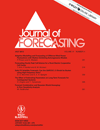
JOURNAL OF FORECASTING
Scope & Guideline
Empowering decision-making through innovative forecasting.
Introduction
Aims and Scopes
- Statistical Forecasting Techniques:
The journal emphasizes traditional and novel statistical methods for forecasting, including time series analysis, regression models, and Bayesian approaches, which are foundational in the field. - Machine Learning and AI Applications:
A significant focus on the application of machine learning and artificial intelligence for forecasting tasks, including deep learning models and ensemble methods, showcases the integration of advanced computational techniques in forecasting. - Economic and Financial Forecasting:
Research related to economic indicators, financial markets, and macroeconomic forecasting is prevalent, highlighting the journal's commitment to addressing real-world economic challenges through rigorous forecasting methodologies. - Probabilistic Forecasting:
The journal supports the development and evaluation of probabilistic forecasting methods, including density forecasts and uncertainty quantification, which are critical for informed decision-making in uncertain environments. - Interdisciplinary Applications:
The journal publishes studies that apply forecasting techniques to various fields, including healthcare, energy, and social sciences, demonstrating the versatility and relevance of forecasting across different domains.
Trending and Emerging
- Integration of Big Data in Forecasting:
There is a growing trend towards utilizing big data sources and advanced analytics for forecasting applications, allowing researchers to enhance model accuracy and incorporate more diverse datasets. - Real-Time Forecasting and Nowcasting:
The focus on real-time forecasting and nowcasting techniques has surged, especially in the context of economic and financial data, driven by the need for timely decision-making in rapidly changing environments. - Hierarchical and Multi-Level Forecasting:
Emerging methodologies in hierarchical and multi-level forecasting are gaining attention as researchers explore the complexities of aggregating forecasts across different levels and dimensions. - Uncertainty Quantification and Risk Assessment:
The importance of uncertainty quantification in forecasting has risen, with an emphasis on developing methods that provide probabilistic forecasts and assess associated risks more effectively. - Interdisciplinary Applications of Forecasting:
There is an increasing trend towards applying forecasting techniques in diverse fields such as healthcare, environmental science, and social sciences, which broadens the applicability and relevance of forecasting research.
Declining or Waning
- Traditional Econometric Models:
There has been a noticeable decline in the focus on traditional econometric models, such as ARIMA and VAR, as researchers increasingly turn to machine learning and advanced statistical techniques for forecasting. - Basic Time Series Analysis:
The emphasis on simple time series analysis without incorporating advanced methods or machine learning has decreased, as the field evolves towards more complex and data-driven approaches. - Single-Method Studies:
Research papers that focus solely on a single forecasting method without comparing it to others or integrating multiple approaches are becoming less common, reflecting a shift towards more comprehensive and comparative studies.
Similar Journals
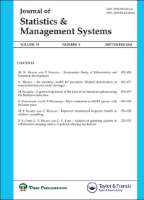
Journal of Statistics and Management Systems
Advancing Knowledge at the Intersection of Data and Leadership.The Journal of Statistics and Management Systems, published by TARU PUBLICATIONS, serves as a pivotal platform for researchers, professionals, and students in the field of statistics and management. With a focus on disseminating innovative research and methodologies that address complex statistical issues and their applications in management, this journal aims to bridge the gap between theoretical frameworks and practical implementations. Although currently categorized under traditional access, the journal maintains an impressive reputation for quality and integrity within its discipline. Located in New Delhi, India, it fosters a global discourse by featuring cutting-edge studies that contribute to both academic scholarship and corporate governance. As the demand for data-driven decision making continues to rise, the Journal of Statistics and Management Systems remains an invaluable resource, offering insights that are essential for steering effective management practices in various sectors.

Journal of Grey System
Bridging Disciplines for Enhanced Decision-MakingWelcome to the Journal of Grey System, a distinguished publication dedicated to the advanced study of decision sciences, applied mathematics, and statistical theories. Published by Research Information Ltd, this journal has carved out a niche within the academic community, focusing on innovative methodologies and interdisciplinary approaches that foster a deeper understanding of complex systems. Although open access options are not currently available, the journal has been recognized for its scholarly contributions, achieving impressive Scopus rankings—including a notable #47 in Decision Sciences and a 60th percentile rank in Applied Mathematics. With coverage spanning from 2008 to 2019, the Journal of Grey System remains an essential resource for researchers and practitioners aiming to enhance their knowledge in statistics, probability, and system optimization. As a result, it serves not just as a platform for academic discourse but also as a catalyst for future research endeavors in the evolving landscape of mathematical and statistical sciences.

STATISTICS
Nurturing quality research in statistics and probability.STATISTICS is a distinguished journal published by Taylor & Francis Ltd, dedicated to advancing the field of statistical science since its inception in 1985. With a strong focus on both the theoretical and practical aspects of Statistics and Probability, this journal serves as a vital platform for researchers, professionals, and students seeking to disseminate their findings and contribute to critical discussions in the discipline. Although categorized in the Q3 quartile for both Statistics and Probability and Statistics, Probability and Uncertainty, the journal's commitment to quality research is evidenced by its inclusion in relevant Scopus rankings. It holds respectable positions, ranked #132/168 in Decision Sciences and #219/278 in Mathematics. By providing a venue for high-quality research articles and reviews, STATISTICS aims to foster innovation, reinforce methodological advancements, and address contemporary challenges in statistical applications. The journal does not currently offer open access, but it is widely distributed, ensuring that significant research reaches the communities that need it most. Researchers are encouraged to submit their work to this essential resource that continues to shape the landscape of statistical inquiry.
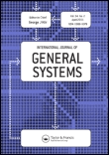
INTERNATIONAL JOURNAL OF GENERAL SYSTEMS
Innovating Research on General Systems since 1974The INTERNATIONAL JOURNAL OF GENERAL SYSTEMS, published by TAYLOR & FRANCIS LTD, is a prestigious peer-reviewed journal dedicated to advancing the fields of systems theory and its applications across a variety of scientific disciplines. With an ISSN of 0308-1079 and an E-ISSN of 1563-5104, this journal has carved a niche since its inception in 1974, continuing to provide a platform for innovative research through to 2024. Featured in the esteemed Q2 category in multiple domains, including Computer Science Applications, Control and Systems Engineering, and Information Systems, it serves as a vital resource for the scientific community, fostering interdisciplinary collaboration. The journal's rankings in Scopus reflect its quality, with noteworthy positions in fields such as Mathematics, Engineering, and Theoretical Computer Science. While access is through subscription, the journal remains an essential conduit for researchers, professionals, and students eager to deepen their understanding of general systems and their complex interactions within various environments.

JOURNAL OF BUSINESS & ECONOMIC STATISTICS
Advancing Insights in Business and EconomicsJOURNAL OF BUSINESS & ECONOMIC STATISTICS is a premier academic journal published by Taylor & Francis Inc, dedicated to disseminating high-quality research in the fields of business, economics, and statistics. With an impressive impact in the academic community, the journal maintains a distinguished Q1 ranking across various categories including Economics and Econometrics, Social Sciences (miscellaneous), and Statistics and Probability, showcasing its relevance and influence in contemporary research. Since its inception in 1983, the journal has served as a vital resource for researchers, professionals, and students seeking insights into quantitative methodologies and their application in the economic domain. While the journal is not currently open access, its rigorous peer-review process ensures that published articles are of the highest scholarly standards. Researchers and practitioners alike will find a rich repository of empirical and theoretical studies that foster knowledge advancement in the intersecting realms of business, economics, and statistical analysis.

Intelligent Systems in Accounting Finance & Management
Empowering decision-making with cutting-edge AI research.Intelligent Systems in Accounting, Finance & Management is a leading journal published by John Wiley & Sons Ltd, recognized for its commitment to advancing knowledge and research in the intersection of artificial intelligence and financial decision-making. With an ISSN of 1055-615X and an E-ISSN of 1099-1174, this journal serves as a vital resource for academics, practitioners, and students interested in the innovative applications of intelligent systems within the realms of accounting, finance, and management. Although it operates under traditional access options, the journal features a wide range of high-quality peer-reviewed articles designed to enhance understanding of complex financial environments and promote effective decision-making through technology. Its editorial standards ensure impactful research that resonates within both theoretical and applied contexts, making it an essential publication for those dedicated to furthering the field of financial intelligence systems.
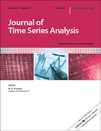
JOURNAL OF TIME SERIES ANALYSIS
Pioneering methodologies for the future of data analysis.JOURNAL OF TIME SERIES ANALYSIS, published by Wiley, is a premier academic journal dedicated to the field of time series analysis, serving as a pivotal resource for researchers, professionals, and students in applied mathematics and statistics. With a strong commitment to advancing scholarly knowledge since its inception in 1980, the journal focuses on innovative methodologies and applications in time series data, highlighting its relevance in various domains, including economics, finance, and environmental studies. Although the journal currently does not offer open access, it maintains a robust reputation, reflected in its 2023 Q1 and Q2 quartile rankings in applied mathematics and statistics, respectively. The contributions published in this journal are instrumental for advancing theoretical frameworks and practical applications in data analysis. Stay informed of cutting-edge research and methodologies by engaging with the JOURNAL OF TIME SERIES ANALYSIS, which is accessible through various academic databases.

Econometric Reviews
Elevating the Standards of Econometric ScholarshipEconometric Reviews, published by Taylor & Francis Inc, is a premier journal in the field of Economics and Econometrics, recognized for its significant contributions to the advancement of economic theory and practice since its inception. With its ISSN 0747-4938 and E-ISSN 1532-4168, the journal has maintained a consistent publication record from 1982 to 2024, offering a platform for groundbreaking research that shapes the landscape of quantitative economic analysis. With a proud place in the Q1 category for Economics and Econometrics as of 2023, it stands as a critical resource for scholars, practitioners, and students alike, actively engaging with themes such as econometric methods, theory, and policy implications. Although operating under a subscription model, the journal’s high impact factor reflects its esteem within the academic community, fostering a rich dialogue among researchers in this evolving discipline. The journal’s office is located at 530 Walnut Street, Ste 850, Philadelphia, PA 19106, USA, forging connections in one of the central hubs of economic research.

Advances and Applications in Statistics
Exploring the Frontiers of Statistical InnovationAdvances and Applications in Statistics is a pivotal academic journal devoted to the dissemination of high-quality research findings in the field of statistics and its diverse applications. Published by PUSHPA PUBLISHING HOUSE, this journal aspires to serve as a dynamic platform for researchers, professionals, and students who aim to share innovative statistical methodologies and explore their practical implications across various disciplines. The journal, with its influential ISSN 0972-3617, fosters open discussion and collaboration within the statistical community, aiming to bridge theoretical advancements with real-world applications. As part of its ongoing commitment to academic integrity and excellence, Advances and Applications in Statistics encourages submissions that not only advance statistical theory but also illustrate their utility in solving contemporary issues in industries such as healthcare, finance, and economics. Although currently lacking an impact factor, the journal's dedication to quality research positions it as a significant contributor to the field. Researchers and academics looking to publish their work in a stimulating and supportive environment will find in this journal a valuable resource.
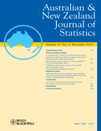
AUSTRALIAN & NEW ZEALAND JOURNAL OF STATISTICS
Empowering Researchers with Cutting-Edge Statistical InsightsAUSRALIAN & NEW ZEALAND JOURNAL OF STATISTICS, published by Wiley, stands as a significant platform for the dissemination of statistical knowledge and applications, specifically within the realms of statistics and probability. With an impact factor reflective of its quality and standing, the journal operates in a Q3 category for both Statistics and Probability, as well as Statistics, Probability, and Uncertainty, positioning it among the important scholarly resources in its field. As a valuable resource for researchers, professionals, and students, the journal encourages the submission of innovative research articles that push the boundaries of statistical science. Offering both print and open access options, it ensures broad accessibility, promoting a culture of collaboration and knowledge sharing across the global statistical community. Covering research from 1998 to 2024, it remains dedicated to advancing understanding in statistical methodologies and their applications, cementing its role in fostering academic discourse and practical advancements in the field.